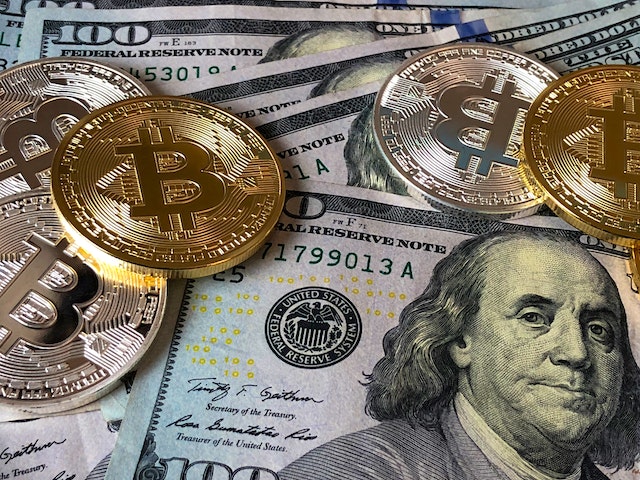
More than 300 million people in India now use digital payment systems daily, creating a vibrant market for global sellers. For small Chinese exporters, this shift is a gateway to reach Indian consumers directly without relying on expensive middlemen. The rapid adoption of online payments means that even small-scale merchants can offer seamless checkout experiences, increasing trust and boosting sales.
Many of these opportunities are being unlocked by platforms like the Indian payment system (印度支付系统) which are designed for cross-border convenience. These platforms give small exporters access to India’s Unified Payments Interface (UPI), net banking, and e-wallets at low integration costs. By connecting their online stores to these systems, Chinese sellers can instantly accept payments in Indian rupees, cutting down on processing delays that once discouraged smaller businesses from entering this huge market.
Instant Access Without Heavy Fees
Smaller exporters often struggle with the high transaction fees and slow settlements of traditional payment channels. Conventional methods like wire transfers or international gateways can take several days and cost a sizable percentage of each sale. For a business working on thin margins, this delay can cripple cash flow. Indian platforms, by contrast, focus on instant settlement and low-cost integration. This allows merchants to reinvest their earnings quickly into inventory, marketing, or logistics.
The simplicity of setup also matters. Many Indian payment providers offer ready-made plug-ins for popular e-commerce software, enabling a Chinese exporter to start accepting payments within hours. This ease of use reduces the need for technical expertise, making cross-border selling less intimidating for small companies.
Building Trust with Indian Consumers
For Indian shoppers, trust is a key factor when buying from overseas sellers. A familiar payment method reassures them that their transaction is secure. When Chinese exporters use a local system like UPI or leading Indian wallets, buyers feel more confident completing purchases. This can directly increase conversion rates and customer loyalty, both critical for smaller merchants trying to establish themselves in a new market.
Localized support is another advantage. Indian platforms often provide bilingual interfaces and customer service, which reduces friction and misunderstandings between buyers and sellers. Features like instant refunds and automated receipts further enhance the customer experience, making a small business appear as professional as a large brand.
Financial Aid Through Technology
The structure of these payment solutions acts as a form of financial aid for small exporters. By lowering entry costs and accelerating settlements, they help businesses operate with less working capital. Some providers even extend credit facilities or partner with banks to offer microloans based on transaction histories. This access to finance allows a Chinese seller to scale up operations faster, hire staff, or improve packaging without waiting for long bank approvals.
Industry experts highlight that these benefits go beyond convenience. “Low-cost payment rails are not just a service; they are a lifeline for small exporters,” says a trade consultant based in Mumbai. This view is echoed by many Chinese merchants who now rely on Indian payment platforms to compete with larger, well-funded companies.
How to Get Started
For Chinese exporters considering the Indian market, the first step is choosing the right payment partner. They should look for providers offering UPI integration, transparent fees, and multilingual support. Some platforms also provide analytics dashboards to track sales trends, which can help merchants fine-tune their strategies for Indian customers.
It’s also wise to test the system with a small batch of products before scaling up. This approach helps ensure that logistics, pricing, and customer service align smoothly with the new market. Once a system is proven, exporters can expand their product range and invest more confidently in marketing campaigns targeted at Indian buyers.
READ ALSO: Leveraging Credit Cards, Loans, and Financial Aid for Success
Looking Ahead
As digital commerce between India and China deepens, the role of payment platforms will only grow stronger. By offering low-cost integration, instant settlements, and trust-building features, these systems remove major barriers that once kept small Chinese exporters from competing in India. The Indian payment system stands as a bridge that makes cross-border trade feel local, giving even the smallest merchant a fair chance to succeed.
The future looks promising for those willing to embrace this change. With the right tools, small exporters can build lasting connections with Indian consumers, secure steady cash flow, and grow their brands across borders. Payment platforms have evolved into more than a checkout tool; they are becoming partners in international expansion, guiding new entrants toward sustainable success in the Indian market.




 Since the first delay in the rollout of the new
Since the first delay in the rollout of the new  The Department of Education previously announced that the online FAFSA portal is already available. Yet The National Association of Student Financial Aid (NASFA) revealed that up to this day, the bungled processes and unresolved issues have prevented higher level education institutions from sending financial aid packages to applicants.
The Department of Education previously announced that the online FAFSA portal is already available. Yet The National Association of Student Financial Aid (NASFA) revealed that up to this day, the bungled processes and unresolved issues have prevented higher level education institutions from sending financial aid packages to applicants. As the majority of college students depend on financial aid for enrollment support, the US Ed Dept. will temporarily relax certain administrative requirements this year. The primary purpose of which is to avoid delays in the release of the new Free Application for Federal Student Aid (FAFSA) in connection with financial aid information being offered to graduating high school students.
As the majority of college students depend on financial aid for enrollment support, the US Ed Dept. will temporarily relax certain administrative requirements this year. The primary purpose of which is to avoid delays in the release of the new Free Application for Federal Student Aid (FAFSA) in connection with financial aid information being offered to graduating high school students. In line with the pronouncements, the US Department of Education explained that the new FAFSA form has been simplified to reduce the more than 100 questions that students and their families need to answer, down to only several dozens. That way, it will be easier for colleges and universities to process the student records in relation to their FAFSA application. The modifications will also allow for the timely issuance of
In line with the pronouncements, the US Department of Education explained that the new FAFSA form has been simplified to reduce the more than 100 questions that students and their families need to answer, down to only several dozens. That way, it will be easier for colleges and universities to process the student records in relation to their FAFSA application. The modifications will also allow for the timely issuance of  A set of new regulations and conditions were issued by the Biden Administration, which colleges and universities must comply with when seeking approval for financial aid. The most prominent conditions included as new rules pertain to gainful employment, regardless of whether the
A set of new regulations and conditions were issued by the Biden Administration, which colleges and universities must comply with when seeking approval for financial aid. The most prominent conditions included as new rules pertain to gainful employment, regardless of whether the  Consumer Protection Laws – One of the new conditions included a proposed requirement by the Education Department, for colleges and universities to include consumer protection laws.
Consumer Protection Laws – One of the new conditions included a proposed requirement by the Education Department, for colleges and universities to include consumer protection laws.




 Pyth network beginners must have a deep understanding of the role played by blockchain oracles in supporting Decentralized Financial (DeFi) transactions. As a blockchain oracle, it provides timely and accurate data feeds that two parties to a DeFi transaction can obtain, without need to involve a third party. Agreements entered into typically involve transfers of cryptocurrencies as mode of payment for goods and services.
Pyth network beginners must have a deep understanding of the role played by blockchain oracles in supporting Decentralized Financial (DeFi) transactions. As a blockchain oracle, it provides timely and accurate data feeds that two parties to a DeFi transaction can obtain, without need to involve a third party. Agreements entered into typically involve transfers of cryptocurrencies as mode of payment for goods and services. A blockchain oracle like Pyth Network allows DeFi apps users to go beyond the blockchain platform by providing off-chain information. Doing so enables DeFI apps to connect to the real world, which makes different types of interactions possible between blockchain networks and DeFi Apps.
A blockchain oracle like Pyth Network allows DeFi apps users to go beyond the blockchain platform by providing off-chain information. Doing so enables DeFI apps to connect to the real world, which makes different types of interactions possible between blockchain networks and DeFi Apps.


 Hustlers University by Andrew tate gives special attention to India, where more than half of the population are globally connected young people. Tate’s Hustler University is quite relevant in today’s real business world, as it aims to broaden knowledge and skills in ecommerce, crypto currency trade, stock investments and engagement in online freelance work.
Hustlers University by Andrew tate gives special attention to India, where more than half of the population are globally connected young people. Tate’s Hustler University is quite relevant in today’s real business world, as it aims to broaden knowledge and skills in ecommerce, crypto currency trade, stock investments and engagement in online freelance work. In India, obtaining higher education is still recognized as an important step toward attaining financial success. Yet for many students in India, financial constraints pose as impediments that bar them from attaining a college degree.
In India, obtaining higher education is still recognized as an important step toward attaining financial success. Yet for many students in India, financial constraints pose as impediments that bar them from attaining a college degree. A Florida car accident loan can help a victim endure the aftermath of a harrowing experience that combines with the uncertainty of the financial condition he is facing. This is especially true if the family relies on him as the main breadwinner.
A Florida car accident loan can help a victim endure the aftermath of a harrowing experience that combines with the uncertainty of the financial condition he is facing. This is especially true if the family relies on him as the main breadwinner. Such damages include financial compensation for the economic and non-economic hardships and disruptions brought about by the car accident.
Such damages include financial compensation for the economic and non-economic hardships and disruptions brought about by the car accident.











 Kicking off this article is the question, “Can Real Estate Make You Financially Secure?”
Kicking off this article is the question, “Can Real Estate Make You Financially Secure?”

